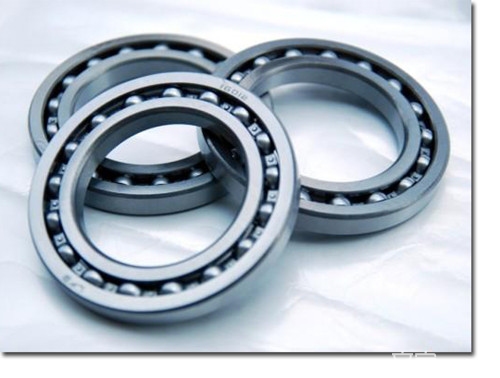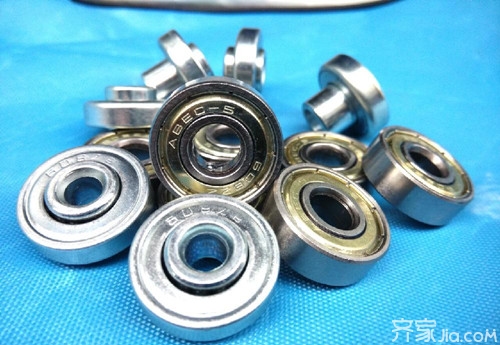Suitable for manufacturing various types of rolling bearing rings and rolling elements of steel working in different environments, collectively referred to as (rolling) rolling bearing steel . Because the bearing can adapt to different working environments, such as low temperature, high temperature, corrosion resistance, anti-magnetic, vibration and shock resistance, the bearing steel can be a dedicated carbon chromium bearing steel, tool steel, structural steel, stainless steel and heat-resistant steel. The most widely used carbon chromium bearing steel. Let's take a look at the relevant knowledge of rolling bearing steel .

Rolling bearing steel
Rolling bearing steels are steels used to make rolling elements and inner rings of rolling bearings and are usually used in the quenched state. Rolling bearings are subjected to high alternating loads during operation. The contact stress between the rolling elements and the inner and outer rings is large and they also work in the lubricant medium. Therefore, the rolling bearing steel has high compressive strength and fatigue strength, certain toughness, plasticity, wear resistance and corrosion resistance. The internal structure and composition of the steel is uniform, and the dimensional stability after heat treatment is good. Commonly used rolling bearing steels are high carbon and low chromium bearing steels containing 0.95% to 1.10% carbon and 0.40% to 1.60% chromium, such as GCr6, GCr9, GCr15, and so on.
In order to meet the requirements for the use of bearings under different working conditions, special-purpose bearing steels have also been developed, such as impact-resistant carburizing bearing steels for the manufacture of rolling mill bearings, high-temperature bearing steels for aircraft engine bearings and work in corrosive media. Stainless bearing steel and so on.
Rolling bearing steel classification
Modern rolling bearing steel can be divided into four categories: high carbon chromium bearing steel, carburized chromium bearing steel, stainless bearing steel and high temperature bearing steel. In the bearing manufacturing industry, a wide range of applications and a large amount of use are high-carbon chromium bearing steels.

Rolling bearing steel production process
The bearing steel is generally smelted using an alkaline electric furnace, and vacuum degassing or ladle vacuum refining may be added. The ingot casting process and ingot design of bearing steels have a great influence on the distribution of non-metallic inclusions and carbides in the steel. Bearing steel tends to produce white spots, so the steel ingots and billets must be slowly cooled. High-quality bearing steel for aviation needs to be smelted by special methods such as electroslag remelting or vacuum consumable remelting.
Rolling bearing steel technical requirements
Bearing steel ingots are generally subjected to long-time diffusion annealing at high temperatures of 1200 to 1250°C to improve carbide segregation. During the hot processing, the furnace atmosphere must be controlled. The slab heating temperature should not be too high, and the holding time should not be too long, so as to avoid serious decarburization. The final rolling (forging) temperature is usually between 800 and 900 °C, too coarse and coarse mesh carbides are easy to appear, and too low rolling (forging) cracks are easily formed. Finished rolled (forging) materials should be cooled to 650°C to prevent the cementite from precipitating at the grain boundaries. Control rolling can be used when conditions permit.
In order to obtain good machinability and pre-quenching pre-organization, the bearing steel for cold working is subjected to complete spheroidizing annealing. Annealing temperature is generally 780 ~ 800 °C, to prevent decarburization when annealing. If there is coarse meshed cementite in the rolled steel, normalizing must be performed before annealing. Chromium bearing steel is usually heated between 830 and 860°C, quenched with oil and tempered at 150-180°C. In the precision bearing organization, the amount of retained austenite should be reduced as much as possible or the retained austenite should remain stable during use, so it is often required to perform -80°C (or lower) cold treatment and 120 to 140 after quenching. °C for a long period of stabilization.

Rolling bearing steel heat treatment
The heat treatment process generally includes three processes of heating, heat preservation and cooling, and sometimes only heating and cooling processes. These processes are connected with each other and cannot be interrupted. Heating is one of the important steps of heat treatment. There are many heating methods for the heat treatment of rolling bearing steels. Charcoal and coal were first used as heat sources and liquid and gaseous fuels were used. The application of electricity makes heating easy to control and no environmental pollution. These heat sources can be used for direct heating, as well as for indirect heating via molten salts or rolling bearing steels as well as floating particles. When the rolling bearing steel is heated, the workpiece is exposed to the air, and oxidation and decarburization often occur (ie, the surface carbon content of the steel parts decreases), which has an adverse effect on the surface properties of the heat-treated parts.
Thus, the rolling bearing steel should generally be heated in controlled atmosphere or protective atmosphere, in molten salt and in vacuum, and can also be protected and heated by coating or packaging methods. The heating temperature is one of the important process parameters of the heat treatment process. Selecting and controlling the heating temperature is a major problem in ensuring the quality of the heat treatment. The heating temperature varies depending on the purpose of the rolling bearing steel material being processed and the purpose of the heat treatment, but generally it is heated above the transformation temperature to obtain the desired structure. In addition, the transformation takes a certain time, so when the surface of the rolling bearing steel workpiece reaches the required heating temperature, it must be maintained at this temperature for a certain period of time so that the internal and external temperatures are consistent and the microstructure is completely transformed. This time is called the holding time.
Editor's summary: Through the above analysis of the rolling bearing steel and its heat treatment, we can already understand the basic information of rolling bearing steel. Rolling bearing steel is far from our daily life, but such products are very important for industrial production. For users, if you need such a product, you need to know more about it.
Steel Radiator Steel Rails Outdoor Steel Stairs Rolling Bearing Steel
Glass folding door set is designed as one kind of exterior glass folding door, connected by hinges for folding door and moving by sliding roller hanging on a aluminum track. We will see this folding door sets in office or house balcony division, which could capture a great view of very corner.
Specification
1. Material: Stainless Steel 304
2. Finish: Polish or Satin
3. Suitable for glass thickness: 8-10mm
5. Max. door width: 900mm
6. Max. door height: 2100mm
7. Max. door weight: 100kg
Folding Door Accessories,Folding Door Hinges,Folding Doors Handles
Jiangyi Industrial Co., Ltd , https://www.cnjyhardware.com
